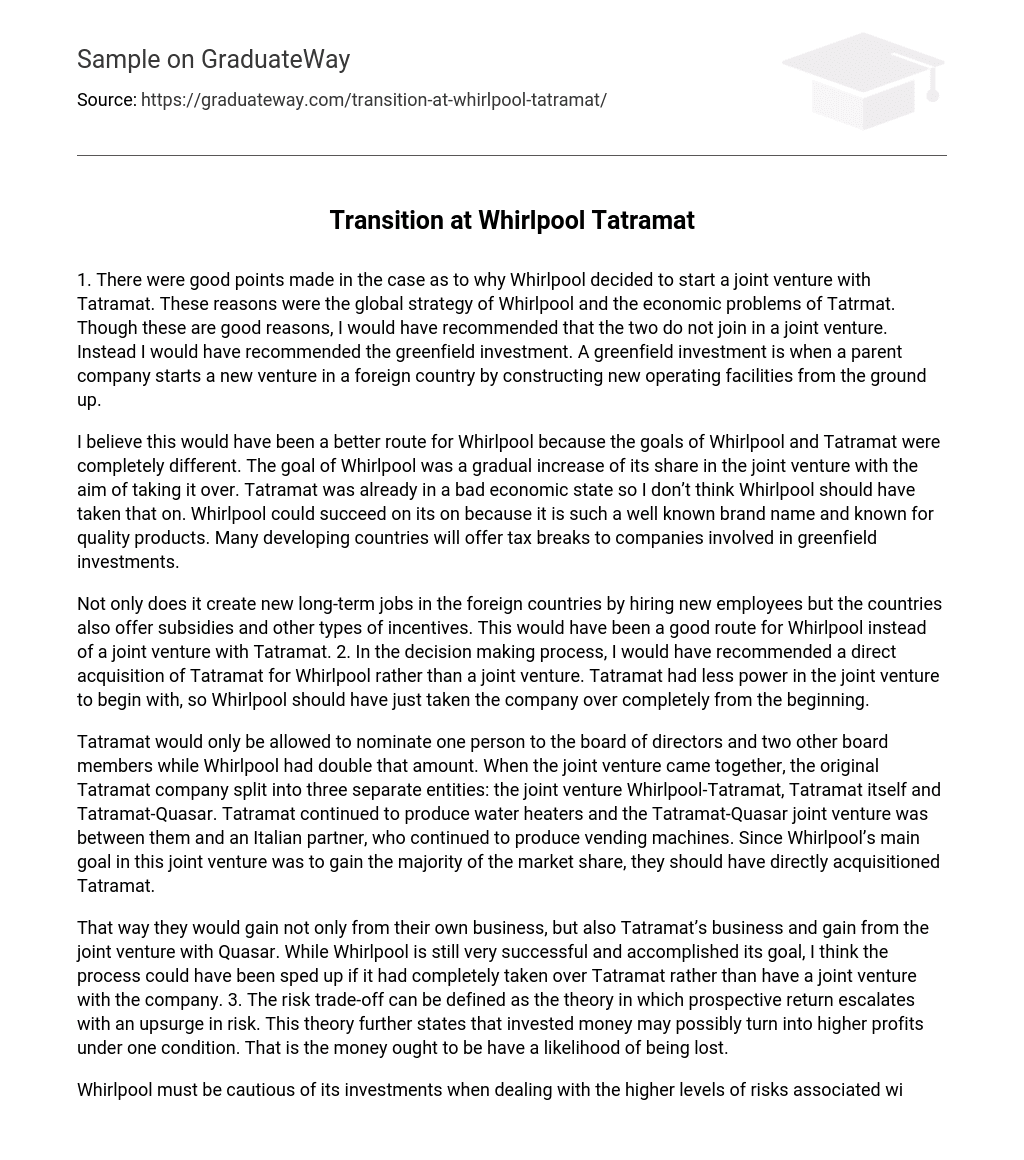1. There were good points made in the case as to why Whirlpool decided to start a joint venture with Tatramat. These reasons were the global strategy of Whirlpool and the economic problems of Tatrmat. Though these are good reasons, I would have recommended that the two do not join in a joint venture. Instead I would have recommended the greenfield investment. A greenfield investment is when a parent company starts a new venture in a foreign country by constructing new operating facilities from the ground up.
I believe this would have been a better route for Whirlpool because the goals of Whirlpool and Tatramat were completely different. The goal of Whirlpool was a gradual increase of its share in the joint venture with the aim of taking it over. Tatramat was already in a bad economic state so I don’t think Whirlpool should have taken that on. Whirlpool could succeed on its on because it is such a well known brand name and known for quality products. Many developing countries will offer tax breaks to companies involved in greenfield investments.
Not only does it create new long-term jobs in the foreign countries by hiring new employees but the countries also offer subsidies and other types of incentives. This would have been a good route for Whirlpool instead of a joint venture with Tatramat. 2. In the decision making process, I would have recommended a direct acquisition of Tatramat for Whirlpool rather than a joint venture. Tatramat had less power in the joint venture to begin with, so Whirlpool should have just taken the company over completely from the beginning.
Tatramat would only be allowed to nominate one person to the board of directors and two other board members while Whirlpool had double that amount. When the joint venture came together, the original Tatramat company split into three separate entities: the joint venture Whirlpool-Tatramat, Tatramat itself and Tatramat-Quasar. Tatramat continued to produce water heaters and the Tatramat-Quasar joint venture was between them and an Italian partner, who continued to produce vending machines. Since Whirlpool’s main goal in this joint venture was to gain the majority of the market share, they should have directly acquisitioned Tatramat.
That way they would gain not only from their own business, but also Tatramat’s business and gain from the joint venture with Quasar. While Whirlpool is still very successful and accomplished its goal, I think the process could have been sped up if it had completely taken over Tatramat rather than have a joint venture with the company. 3. The risk trade-off can be defined as the theory in which prospective return escalates with an upsurge in risk. This theory further states that invested money may possibly turn into higher profits under one condition. That is the money ought to be have a likelihood of being lost.
Whirlpool must be cautious of its investments when dealing with the higher levels of risks associated with the industry. The company took the risk of purchasing Tatramat, relocating its headquarters’ and subsequently changing its name to Whirlpool Slovakia in 1996. The process of taking risk by Whirlpool is the price of achieving returns. The threshold is that if a company desires to make profit there is no way that it can avoid risks. The takeover of Tatramat by Whirlpool generates trade-offs for the preference between foreign direct investments in the future.





